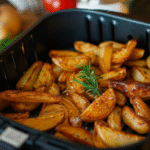Starting and ending prolonged fasting correctly is essential for maximizing its benefits and avoiding discomfort. In fact, how you break your fast is just as important as the fast itself. If you begin improperly, you may struggle with unnecessary hunger and difficulty sticking to it. And if you end it the wrong way, you risk losing the benefits altogether—along with facing unpleasant side effects like bloating, diarrhea, constipation, or even migraines.
When it comes to timing your fasting, consistency matters. Establishing a routine—such as fasting overnight and breaking your fasting in the morning—helps regulate your body's internal clock and can make the process easier over time. Listen to your body’s signals; if you feel unusually hungry or fatigued, consider adjusting the timing or composition of your meals accordingly. Hydration is also key; drinking plenty of water throughout your fasting period can stave off hunger pangs and support your metabolism. Additionally, staying engaged with light activities can distract you from craving foods and keep your mind focused on your health goals. Remember, there's no one-size-fits-all schedule, so find what works best for your lifestyle and body rhythms to ensure a sustainable fasting practice.
How to Start Fasting the Right Way
First, stop eating at least three hours before bed. Giving your body a head start by finishing your last meal a few hours before sleep helps ease you into fasting. Eating too close to bedtime can lead to intense hunger the next morning, making the fast harder to maintain.
Second, make your last meal nutrient-dense. Focus on a meal that’s low in carbs and sugars but rich in fiber, protein, and healthy fats. This helps stabilize blood sugar levels and keeps you satiated longer, setting you up for a smoother transition into fasting.
How to Break Your Fast Safely
Breaking a fast requires a gradual approach to avoid shocking your digestive system. Think of it as gently waking your body up from a deep rest—the more mindful and patient you are, the better the results.
Begin by healing the gut first. Start with something gentle, like bone broth or miso soup. These liquids are easy on the stomach and help soothe and repair the gut lining, preparing your digestive system for more solid foods later.
Next, reintroduce probiotics. Incorporate probiotic-rich foods such as yogurt, kombucha, or sauerkraut. These help restore healthy gut bacteria, which play a crucial role in digestion, immune function, mood regulation, and even weight management.
Then, feed the good bacteria. Add lightly steamed vegetables to your meal. These are easier to digest and provide the necessary fiber to nourish the beneficial bacteria you’ve just reintroduced. Some people also use a fiber supplement to help coat the stomach lining for added comfort.
Finally, slowly introduce protein. Avoid rushing into heavy proteins right away, as they can be harsh on a sensitive digestive system. Instead, ease into protein gradually to allow your gut time to adjust.
By following these steps, you’ll ensure a smooth transition in and out of your fast, preserving all the hard-earned benefits while avoiding discomfort. Remember, patience and mindfulness are key—your body will thank you for it.
Maintaining consistency and listening to your body are essential for long-term success. Track how you feel during and after your fast to identify patterns and preferences that work best for you. Keep in mind that fasting is a personal journey—what works for one person may need adjustment for another. Gradually increasing the length of your fasts allows your body to adapt without overburdening your system. It's also helpful to consult with a healthcare professional, especially if you have underlying health conditions or are taking medications. Remember to prioritize quality sleep, manage stress, and cultivate a supportive environment to enhance your fasting experience. By approaching fasting with patience, mindfulness, and flexibility, you set yourself up for sustainable health benefits and a more positive relationship with your body and food.
If you require any assistance with this article, please do not hesitate to Contact Us
You might not realize it, but you're likely consuming far more sugar than you think—and it’s not just from sweet treats.
















